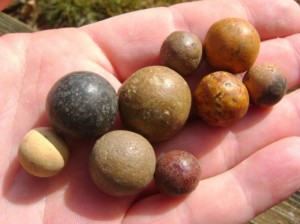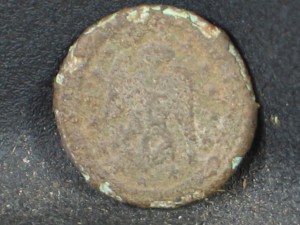Have you ever wondered what the job of an archaeologist entails? Is archaeology as action filled as it is depicted in the Indiana Jones movies?
(For your listening pleasure!)
This past Friday, I was lucky enough to put some of my own lingering questions about archaeology to rest. Through laboratory work with my archaeology class, I got a glimpse into the life of an archaeologist. Unfortunately, I did not take down any bad guys or run through any deserts, but needless to say, the experience proved to be quite interesting.
My hopes were not especially high for the lab work section of my archaeology course. Frankly, I was under the false impression that it would consist of manual labor in an eerie basement (plus, who really wants to do any sort of work on a Friday afternoon). However, I quickly realized just how terribly I had misjudged archaeological lab work.
Upon opening my first bag of artifacts from the Dunn Site, I became invigorated by the idea that I held ancient relics in my hands and that they represented a little piece of history. Most intriguing to me were not the well-preserved glass bottles and pottery, but rather, the little pieces—the buttons, the marbles, even fragments of glass. Was the button that of a rich man or did it belong to a little girl? Did a little boy use this marble in the schoolyard? Each of these items awaits an archaeologist to uncover its unique story
After recovering an artifact from a site, an archaeologist must create some order in what otherwise may appear to be a random set of objects. Thus, they work to classify the artifacts according to certain criteria. First, artifacts are generally classified according to material: glass, metal, ceramic, or stone. Within these groupings, archaeologists may sort them further. For example, glass may be sorted into two divisions: window glass and vessel glass. Once categorized, artifacts can be stored and then labeled based upon their respective trench unit and stratigraphic layer in which they were found.
While many people believe that an archaeologist’s main focus is to find an artifact, in reality, all of this work is completed with the main goal of finding out the effect that an artifact had on a culture–to determine that the button belonged to a rich man and the marble was, indeed, used by a boy in a schoolyard. In the end, the tiniest of artifacts can reveal the most about a past culture.
Works Cited:
Audio 1: http://rowthree.com/audio/indy_theme.mp3
Image 2: http://arcadiamillvillage.blogspot.com/2011/06/artifact-of-week-us-armed-forces-button.html
http://www.digonsite.com/drdig/general/32.html



You’re right – context is critical for determining, as you say, who owned an artifact and what they used it for. Lab work’s main purpose is to ensure that an artifact brought in from the field is cleaned, categorized, and recorded – all with the goal of keeping the artifact associated with the site where it was found and with the other items that were found in the same place. While lab work can be time consuming and is sometimes not as exciting as excavation, it is an absolutely necessary step that enables archaeologists to analyze the artifacts they dig up. In the early years of archaeological excavations, it is well known fact that excavators often chose the “best” artifacts that they found to dig up and sometimes even chucked the rest; however, their methods could be equally haphazard when they brought their treasures home. Maps of archaeological sites, given the technology of the early 1900s, were often incorrect or incomplete, so artifacts exhumed would not have been necessarily linked to their physical context or to the items nearby that didn’t make it into the lab. When thinking about modern lab work, it becomes clear that the way we do things now speaks in many ways to the mistakes of our predecessors.